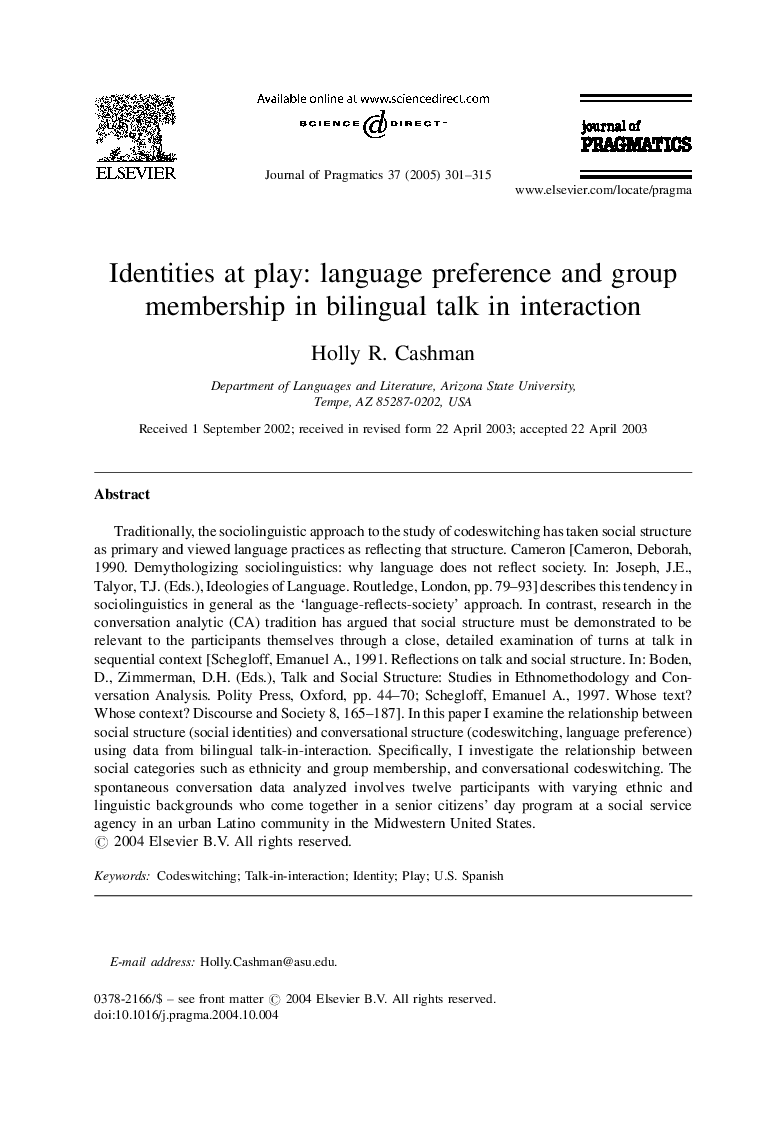| Article ID | Journal | Published Year | Pages | File Type |
|---|---|---|---|---|
| 10460365 | Journal of Pragmatics | 2005 | 15 Pages |
Abstract
Traditionally, the sociolinguistic approach to the study of codeswitching has taken social structure as primary and viewed language practices as reflecting that structure. Cameron [Cameron, Deborah, 1990 . Demythologizing sociolinguistics: why language does not reflect society. In: Joseph, J.E., Talyor, T.J. (Eds.), Ideologies of Language. Routledge, London, pp. 79-93] describes this tendency in sociolinguistics in general as the 'language-reflects-society' approach. In contrast, research in the conversation analytic (CA) tradition has argued that social structure must be demonstrated to be relevant to the participants themselves through a close, detailed examination of turns at talk in sequential context [Schegloff, Emanuel A., 1991. Reflections on talk and social structure. In: Boden, D., Zimmerman, D.H. (Eds.), Talk and Social Structure: Studies in Ethnomethodology and Conversation Analysis. Polity Press, Oxford, pp. 44-70; Schegloff, Emanuel A., 1997. Whose text? Whose context? Discourse and Society 8, 165-187]. In this paper I examine the relationship between social structure (social identities) and conversational structure (codeswitching, language preference) using data from bilingual talk-in-interaction. Specifically, I investigate the relationship between social categories such as ethnicity and group membership, and conversational codeswitching. The spontaneous conversation data analyzed involves twelve participants with varying ethnic and linguistic backgrounds who come together in a senior citizens' day program at a social service agency in an urban Latino community in the Midwestern United States.
Related Topics
Social Sciences and Humanities
Arts and Humanities
Language and Linguistics
Authors
Holly R. Cashman,
